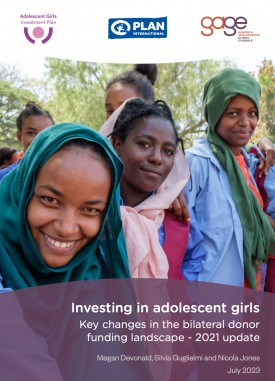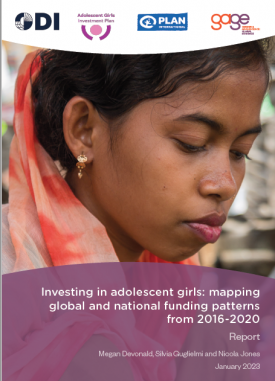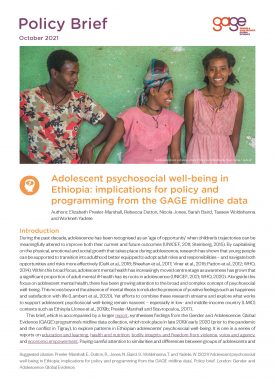Despite the UN General Assembly adopting a commitment for high-income countries to give 0.7% of national income in aid, in 2020, the United Kingdom (UK) government announced that it was reducing overseas aid spending from 0.7% of gross national income (GNI) to 0.5%. As a result, some countries have seen significant reductions in ODA funding. In order to better understand the impacts of recent budget cuts on adolescent girls, this briefing draws on data from our recent review (Devonald et al., 2023) of investments in adolescent girls. This analysis estimated the amount of gender- and adolescent-targeted ODA for 10 bilateral donors, including the UK. For the purposes of this brief, we focus only on the findings for investments by the UK.
We found funding for gender and adolescent programming has faced significantly higher cuts (33%) than the reduction to the overall aid budget (21.1%). Humanitarian aid targeting adolescent girls in fragile contexts was significantly hit: the sectors most severely affected were emergency response, development food assistance and disaster prevention and preparedness. Other key programme cuts included those targeting adolescent girls’ education and access to sexual and reproductive health. Although UK ODA is set to increase in 2024, unless concerted action and at-scale funding is invested to address the impacts the cuts have already had on the most marginalised adolescent girls in low-income contexts, the commitments of the International Women and Girls Strategy are unlikely to be realised.
Suggested citation:
Devonald, M., Guglielmi, S. and Jones, N. (2023) ‘UK ODA cuts: how do they impact adolescent girls?’. Policy brief. London: Gender and Adolescence: Global Evidence


